














 By JOHN D. WINKELMAN Associate Editor
By JOHN D. WINKELMAN Associate Editor
While fishermen are famous for fudging measurement estimates, deer hunters are not immune from stretching the story and size proportions of the bucks they bring home. I have a few sets of antlers that I measured myself and rounded up a little bit as I described them.
That was until I took them to the Missouri Department of Conservation’s Antler Scoring Event at the Jay Henges Shooting Range and Outdoor Education Center near High Ridge. It is scheduled each year after most antlers from the previous fall seasons have had at least 60 days to fully dry. This winter it was on February 19.
I had originally claimed the three mounts that I have measured in the range of 120, 130 and 140. Once the paperwork was completed by the official scorers, my trophies had shrunk to net totals of 109, 115
and 120 (still rounding up the fractions).
The most common vernacular in discussing deer antlers is to simply count the number of points and call your deer an eight-pointer or whatever total you can identify as at least an inch long, big enough to hang a ring on, or any other guideline your conscience can allow.
THE PROBLEM
The problem beyond the inconsistency in that counting system is that it doesn’t truly reflect the age or size of the deer. One of the biggest deer I’ve seen harvested was a six-pointer that was built like a young Clydesdale. Of the three racks I had measured at Henges in 2019, the smallest is the 10-pointer. The other two higher scoring antlers have nine ring-holders. A one-yearold deer can have an eightpoint rack that is barely bigger than a large man’s hands.
The event at Henges uses the Boone and Crockett Club official scoring system for North American big game trophies. The measurements count the total number of points, but the final score takes into account the overall length of the main beam on both sides, the length of each point, the circumference at the smallest place between each of the first four points, and the distance of the inside spread all added together.
For symmetrical racks, the accumulated differences between the two sides, plus any abnormal points, are subtracted from the total of all the measurements added together for length, spread and circumference.
The annual event at Henges is held in late winter because antlers are required to have dried for at least 60 days after harvest before they can be officially scored. Hunters are also welcome to bring shed
antlers they have found or racks from deer they harvested in previous years.
There is no cost to have antlers measured. For more information, call (636) 9389548. The shooting range and education center is at 1100 Antire Road near Interstate 44 between Valley Park and Eureka, MO.
The Boone and Crockett Club is the internationally recognized standard for judging deer racks taken with firearms from any location. The Pope and Young Club provides the same kind of certification for antlers harvested by bow and arrow.
The Missouri Show-Me Big Bucks Club recognizes trophy white-tailed deer harvested or found in the state, in both the typical and non-typical categories. The organizations charge a standard fee for entering scores in their record books.
Hunters are also asked to provide details on date,
time and location of harvest. Record book entries require proof or certification that the hunter held a valid permit at the time of harvest.
John Winkelman is associate editor of Outdoor Guide Magazine. If you have story ideas to share, e-mail ogmjohnw@aol.com, and you can find more outdoor news and updates at johnjwink.com.

and tabulate measurements at the Jay Henges Shooting Range and Education Center in High Ridge in 2019.
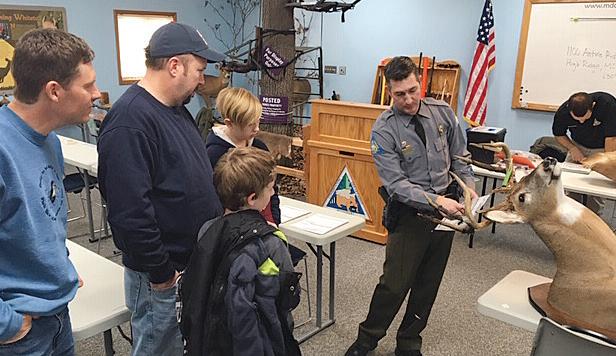
There’s something special about fishing in Missouri. That unmistakable pink flash of a Rainbow Trout turning in the current, the red dots of a Brown rising into shallower water, the rush of a Largemouth striking the surface. You

can cast a line anywhere, but you can only fish like this in Lebanon, Missouri. Make your next fishing trip count.
VisitLebanonMo.com | 1.844.4LEBANON





As the water warms from early spring sunshine, phytoplankton and zooplankton begin to appear in the very shallow waters. Be it either a lake or pond, the nutrient-rich skinny water attracts hungry bluegills.
It is also a great time, as a shoreline with little wind action is a favorite location for bedding bluegills. Early
on they are suspending just out from the bedding areas. They build nests in 1 to 8 feet of water. The depth is dependent on water clarity.
Water temperatures vary from year to year and thus affect the time for the first spawning activity. The best water temperatures are in the mid-70s.
Due to water depth ranging in the inches, most anglers disregard this fishery or fish it only a little from shore. Boats
have difficulty reaching the backs of coves where most of the fish are feeding. Kayaks are a nifty exception to the rule when fishing such water and dropshotting is a productive method of fishing.
When man first crossed over the Bering Strait and began to settle in North America, he brought with him a craft made of animal skins stretched over a wooden frame. This

one-man craft was fragile and no doubt cost some people their lives. But it was light and portable. Today’s kayak is made of manmade materials and is much safer. Usually constructed of fiberglass, they are heavier but still much more portable than another watercraft. Some even have portable carts that allow for wheeling right up to the launch site. Some are for fishing, with live wells and rod racks, etc.
Dropshotting is a finesse presentation that is also known as controlled depth fishing. It is particularly effective for suspended fish like the bluegills found around the boat docks and in coves.


This pattern is particularly effective with light line regardless of the type of rod and reel combination. For flooded brush fishing, a long rod with four-to-6-pound line is recommended. In jigging situations from boats stationed over a brush pile, shorter rods can be effective.

THE PALOMAR KNOT
Rig the line by tying a Palomar knot about 18 inches from the end, with a very long tag end. Tie the Palomar knot by doubling the line and forming a loop three to four inches in length. Pass the end of the loop through the hook’s eye. Hold the standing line between thumb and finger, grasp the loop with your free hand and form a simple overhand knot. Pass the hook through the loop and draw line while guiding the loop over top of eyelet. Pull the tag end of the line to tighten the knot snugly. Do not trim the tag end.
To the tag end, attach a sinker. This can be a split-shot sinker, but remember to tie a small overhand knot to the very end to keep the sinker from slipping off when caught in brush or rocks.

The weight of the sinker is your option. It is advisable to use one that will create neutral buoyancy.

Thread a piece of nightcrawler onto the hook. When the line drops into the water, the worm and hook float above the sinker. As the rod tip is
moved, the action is applied to the bait not the sinker.
This rig is cast, jigged or drifted. The key is to not move quickly. The idea is to wiggle the bait, not jerk it. Cast it out and let the bait sink. Watch the line float and twitch it as you watch it float. Give it a shake occasionally, which will cause the worm to twitch.
Bluegills relate to vertical structure such as sticks, trees and other vegetation in the water. On hot, sunny days they seek out areas shaded from overhead light. This can be under docks, or a tree hanging over the water.
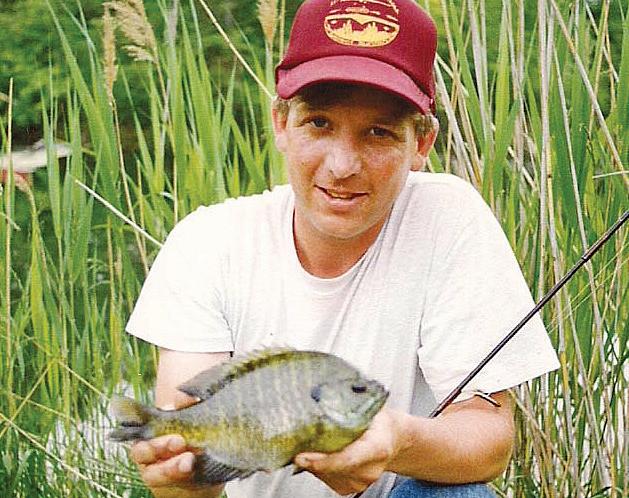
Kayaks allow anglers to sit comfortably. In real skinny water, you can move over brush and rocks. Do so slowly and as quietly as possible. Sound scares fish. You should not move right on top of the fish but rather stay back and cast to them.
Topside water-tight compartments in kayaks permit stowing gear and rod holders. Additional gear can be attached using bungee cords. Modern craft are stable, unlike the old-fashioned kayak.
Cruising around coves, we tend to spend more time looking at the wildlife than actually fishing. You can catch a number of nice bluegills and a couple of crappies found using the equipment.
Don Gasaway is an outdoor writer from Marion, IL. The author of over 1,000 magazine articles, he can be found at www.facebook. com/#1/DonGasawayWriter and at www.facebook.com// DonGasawayfishing/.
























Spring thaws and rainy weather cause smallmouth streams to rise and become dingy or downright muddy. Despite these discouraging conditions, when water temperatures rise toward the 50-degree mark, bronzebacks move toward suitable spawning habitats.

Modern research indicates that these wandering smallies move a few hundred yards to several miles in either direction. Some move downstream, but the highest percentage favor upstream migration.
Shallows with a gravel bottom and nearby weedbeds are the preferred spawning sites. The gravel can be easily excavated to build the smallmouth’s crude nests, allowing the adhesive eggs to incubate in the warming water. Adjacent
weedbeds serve as a nursery for tiny bass fingerlings. They can find minute insect larva to promote growth while providing a hiding place from their numerous predators.
Areas with deeper structures, like undercut banks or downed timber, provide prospective spawners a safe retreat when disturbed. It’s these holding areas that should be the targets of pre-spawn fishing.
Anglers that fish the same water that provided a bountiful catch last summer or fall will be sorely disappointed by a lack of success there during pre-spawn.
Fishing these areas requires a different approach, presentation and fly selection.
Shallow water adjacent to the stream’s main flow often harbors eddies that sweep back upstream in a slowed circular
motion. Eddies are also commonly found downstream from significant current breaks near the edge of the stream’s flow, such as bridge abutments or deadfalls. These areas offer good resting lies for fish out of the force of the strongest currents and provide food concentrations that sweep past their positions. Nymphs, leeches, minnows, crayfish and other prey are on the menu.
The most aggressive feeders often locate at the initial current break, where the flow begins to decrease. This is the first area to explore. A cautious approach from the downstream end of the eddy enables the angler to face and cast upstream. Short, accurate casts allow the fly to sweep naturally into the eddy. Less aggressive smallies will move to the slowest part of the eddy near its back edge. Reposition near enough to the upstream end of the eddy so casts made
toward the downstream side allow a dead-drifted fly to sweep toward the casting position.
The best success is often the result of imparting intermittent action. One method of providing action is lifting the rod tip, then lowering it a few inches, followed by a line strip to remove slack. Experiment with the vigor of the imparted movement until a successful trigger has been established. The simple, ever-productive Woolly Bugger is often a good pattern for exploring eddies.
Clousers are another viable fly choice as a searching pattern. The weight of the barbell eyes can be adjusted from extra-small, small or medium to allow the angler to change the depth of the presentation and control the fly’s drift. Color combinations that include black, brown, olive and fluorescent chartreuse are successful in stained water.
A second productive area for spring smallmouth bass is the mouths of tributaries. While these smaller waterways might also be affected by high, stained water, they will rise, settle and fall much more rapidly than the rivers they feed. River-dwelling smallmouths, some of surprising size, enter the mouths of tributaries and even travel some distance upstream to forage while avoiding the rigors of battling strong currents and coping with muddied water.
Smaller, clearer water requires stealthy approaches, gentle casts and perhaps even more realistic fly patterns.
Fish the eddys near the edges of the stream’s flow for resting smallmouth that are waiting for food to sweep past them.
Fishing upstream, using short casts or simply reaching the rod forward to drop the fly on the water, all spook fewer fish.
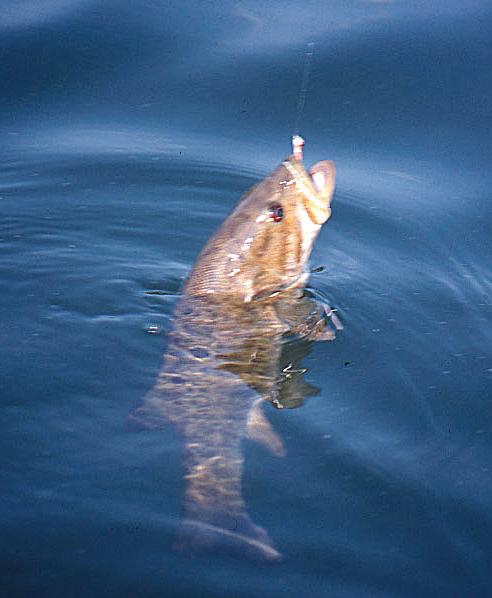
Dead drifting the mouths of tributaries can be the best tactic and should be tried first. If action is needed, very subtle movements are often best. Flies should generally be downsized from the river offerings depending, of course, on the comparative size of the stream. Upstream presentations in tiny streams make a lot of sense, but you must avoid casting shadows over potential fish lies and hooking over-hanging brush.
Mayfly and damselfly nymphs work well in tributaries. Flies tied “in the round” allow the current to tumble the fly without causing it to appear unnatural when it’s upside down. Sparsely tied, lightly weighted streamers on sizes 10 and 12 nymph hooks such as TMC 200R can entice hungry smallmouths. White marabou streamers produce well in clear water, as do sparsely tied hairwing patterns.
Switching both tactics and locations can put fly fishers in smallmouth bass action in early spring. Choose dark-colored flies for darkened water and progressively lighter colors as the water clears. Remember always to release these magnificent game fish.
Terry and Roxanne Wilson have written for Outdoor Guide for over three decades. They can be found at thebluegillpond.com and on Facebook at warmwaterflyfishing.
The mouths of tributaries fished using downsized flies can yield some tail-walking smallies.
Critical financial help totaling $19.5 million is on the way for researchers and game managers dealing with chronic wasting disease (CWD). Congress included the Chronic Wasting Disease Research and Management Act within the Omnibus Budget Bill that passed prior to adjournment of the recently completed 117th session.
“This funding to fight CWD was a 2022 legislative priority for the Rocky Mountain Elk Foundation (RMEF), and is vitally important for the future of elk and other ungulates, CWD research, wildlife management and hunting,” said Kyle Weaver, foundation president and CEO. “We salute Congress and thank our coalition partners, RMEF members and sportsmen and
women for helping to push this across the finish line.”
The Foundation and the Boone and Crockett Club organized a coalition of conservation and wildlife organizations that worked together for 18 months leading up to the victory.
“This took a lot of heavy lifting and work behind the scenes,” said Blake Henning, the foundation chief conservation officer. “RMEF met with lawmakers on Capitol Hill and had at least 50 calls or meetings with staff and members to get bipartisan sponsors and secure votes for passage. Members also generated hundreds of letters to their representatives that helped turn the tide.”
The legislation bolsters CWD research to develop testing
methods, enhance detection efforts, better understand genetic resistance and assist management by prioritizing funding for state and tribal wildlife agencies that have the highest incidence and greatest of CWD.
CWD is a progressive, degenerative and always fatal nervous system disease found in both farmed and free-ranging deer, elk and moose. It may be transmitted through direct animal-to-animal contact, contact with saliva, feces or carcass parts of an infected animal, and may also spread through soil contaminated with any of the above fluids or tissues. So far, scientists have confirmed its presence in 30 states, five Canadian provinces and two countries overseas.

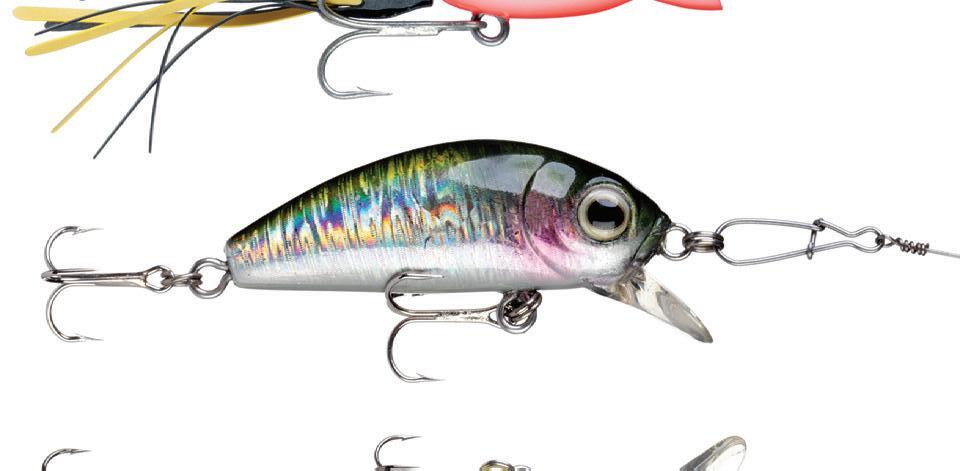


























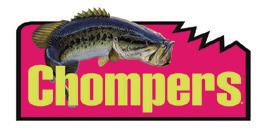








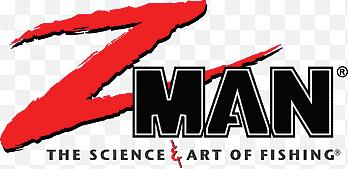




As I scroll through the Internet, I see a lot of “new year, new me” crap, and everyone sharing their year in outdoor adventures. Lots of photos of deer, ducks and fish.
little-known fact is that when a game warden writes a ticket, the local school gets the funds from that ticket. That is good for your local areas, I guess.
The last few years, with Covid and then with folks getting out a lot more, have driven a need for more outdoor education. Places where I had never seen people before now have a lot of people enjoying them.

I guess I’ve been fortunate because, in my nearly four decades of outdoor excursions here in Missouri, I’ve never had to use a firearm in self-defense.
It blows my mind at how many people actually share pictures online of them either illegally taking fish or literally posting photos of having way over their limit of fish.
Hey, I am definitely not the guy who is here to judge you. You do you, but remember that once you put it out there, no matter how much deleting you do, it never goes away.
The Missouri Department of Conservation (MDC) is doing a great job with a small budget trying to protect the outdoors and our way of life, while still balancing trying to keep the public happy while doing so.
In the past few years, they have brought elk back to Missouri and started a management hunting season for them as well. They have even brought back a season for black bear in Missouri. There has been a lot of blowback, because why have a hunting season? The reason is they must be managed. Just like deer, raccoons or even mice. Having too many can pull nature out of balance.
But just like anything else, it takes lots of money to manage and protect our pristine state. So the state has all kinds of programs that require you to buy permits and tags. A
I don’t have a problem with that, but when I go to some of these areas, I see that things like needles and other drug paraphernalia are something that is no longer uncommon to find on a riverbank, pretty much anywhere you go. Of course we still find cans and trash things that, no matter what we do, are always going to be there because some people will never learn.
Please educate others, especially children, that you do not touch needles. When there are stream cleanups with MDC, please participate. We only have one environment, and if we destroy it with trash, it won’t be there to enjoy later.
MDC has spent a lot of time setting up programs such as the Missouri Blue Ribbon Trout Slam, the Missouri Smallmouth Slam and others. There has been an influx of folks to those specific areas, and we need to step up as sportsmen and ladies to help protect what we want for our children to enjoy for another 100 years.
Join your local stream team and help clean up our own messes. Anyway, maybe next week I’ll be on a bigger soapbox, but education is key. People must understand what trashing our environment does, not only to our fish and game but to our people.
Darrell Cureton hosts the Missouri on the Fly podcast and is a regular contributor to Outdoor Guide Magazine.

And in my remaining years, I hope I never have to. But I’ll still carry a pistol or revolver with me when I enter the woods because encounters between humans and large predators are becoming more frequent in my home state.
An old friend of mine who owns property in Sullivan, Mo., claims to have run across a mountain lion while deer hunting on a couple of different occasions. Fortunately for him, the big cat spooked and ran off.
Just recently, a large mountain lion was struck and injured by a motorist in Franklin County.
During recent years, the black bear population has grown to the point where Missouri has opened a hunting season. And according to our local and national headlines, critters of the two-legged sort are becoming more and more dangerous with each passing year.
In my last column, I mentioned how an ornery trespasser tore down posted signs and ripped one of them to shreds on the property that only I had permission to hunt. Fortunately, we never crossed paths this past deer season, and I wound up harvesting a nice 8-point buck.
Back in 2015, Texas Gov. Rick Perry was out for an early morning jog with his pet Labrador retriever. He was in an undeveloped area of Austin.
Somewhere along the way, he and his pet were approached by a large coyote that began menacing the dog. Just before the coyote attacked his canine companion, the governor pulled his CCW from his pocket and dispatched the critter. According to news sources, his handgun was a Ruger LCP in .380 auto loaded with jacketed hollow-points. Perry mentioned that he carries the little gun in remote areas for protection against snakes.
From what I’ve heard and read over the years, it’s commonplace for southern outdoorsmen to carry “tacklebox” guns while on fishing trips. There’ve been cases in which the venomous cottonmouth has aggressively approached and bitten fishermen. And rattlesnakes are also quite common in some areas of the southern United States. Therefore, it makes sense to carry a small handgun along with your fishing tackle.
Trail guns and tacklebox guns are usually limited to semi-autos or revolvers, even though single and double-barreled derringer types are also available.

As a teenager growing up in rural northwestern Pennsylvania, I was too young to own and carry a modern handgun, so I often carried my black powder revolver on my hip. It was a Navy Arms version of the Rogers and Spencer .44.

I usually crammed the cylinder chambers full of black powder and .454 lead round balls, with .38 special plus P performance. I never
felt under-gunned while trekking across those scenic Alleghany foothills.
These days I have opted for a more modern handgun while in the woods or hanging out down by the river. Though I grew up with revolvers, and still own quite a few, I usually carry my Glock 42 or Ruger LCP. Both guns are .380 auto and are easy to tuck in a pocket holster or on my belt.
Though some might opt for the larger 9mm, I believe the .380 with the proper bullet is plenty for anything I might engage in my little neck of the woods. I still like the simplicity and reliability of the revolver.
A good .38 special six gun loaded with 158 grain hollow-points is plenty capable for most things here in the Midwest also.
The odds of me encountering an aggressive bear or a mountain lion are slim to none, and if I come across one of those ornery two-legged critters, hopefully, simply implying that I’m armed will de-escalate the situation.
If snakes were my main concern, I might carry one of my .22 revolvers. My Heritage Roughrider revolver is deadly accurate out to 15 yards and with the .22 magnum cylinder installed, it’s handy for larger predators like the rogue coyote that menaced Gov. Perry and his dog. Regardless, I carry my sidearm with confidence knowing that it’s in my pocket or at my hip if I ever need it.
Of course, if I were further out west or in Alaska, I would opt for something larger. Grizzly and brown bears have been known to attack hunters and hikers alike, so a .44 magnum or larger revolver would be ideal.
Where wolves and mountain lions are prevalent, I would most likely carry my Glock 23 in .40 Smith and Wesson or Ruger Blackhawk in .45 Colt. Either one, with the right load, has plenty of knockdown power for thin-skinned predators. Even the good ole’ 1911 in .45acp, would be adequate for the smaller predators.
But of course, regardless of what you carry, good marksmanship skills are necessary to keep you safe in an encounter with an aggressive animal. Popping off a round into the ground might spook an agitated critter, but time is of the essence and there may not be much of it if a critter is intent on attacking you.
More importantly, though, is firearms safety. The chances of you ever having a dangerous encounter with a wild animal are extremely slim, but the more common accidental discharge can be just as deadly. Please, whether it’s the diminutive .22 lr or the mighty .44 magnum, always regard firearms safety as the number one priority.





















Abu Garcia fishing is celebrating more than 100 years of pro-level engineering, since 1921, with new rods. It introduced its first fishing reel, the ABU Record, in 1941.
Its reels are designed for anglers who want speed, performance, and the ability to endure the most strenuous demands.
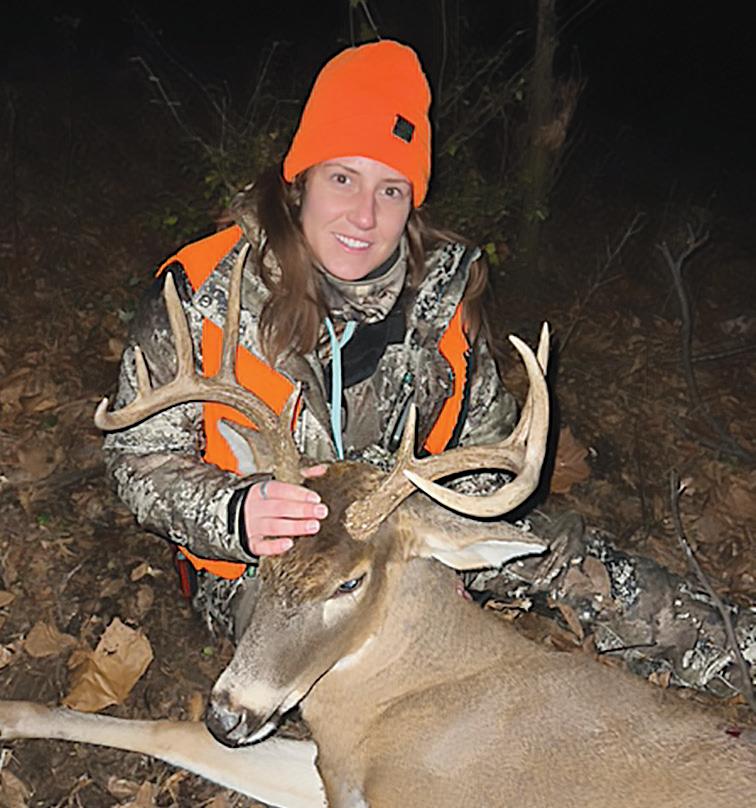
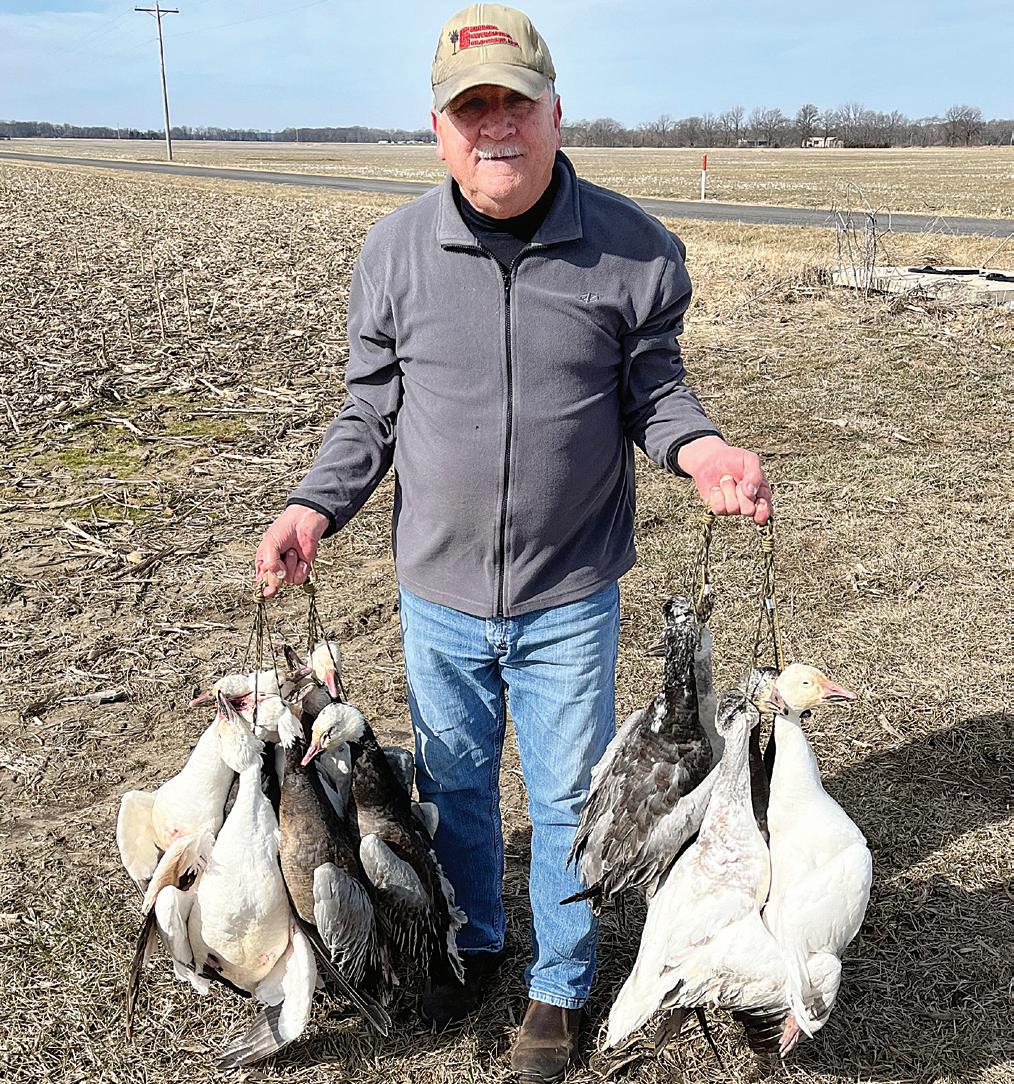
The freshwater reels make light work of heavy cover, fish hard water with maximum efficiency, and provide the speed and strength needed for any feeding frenzy.
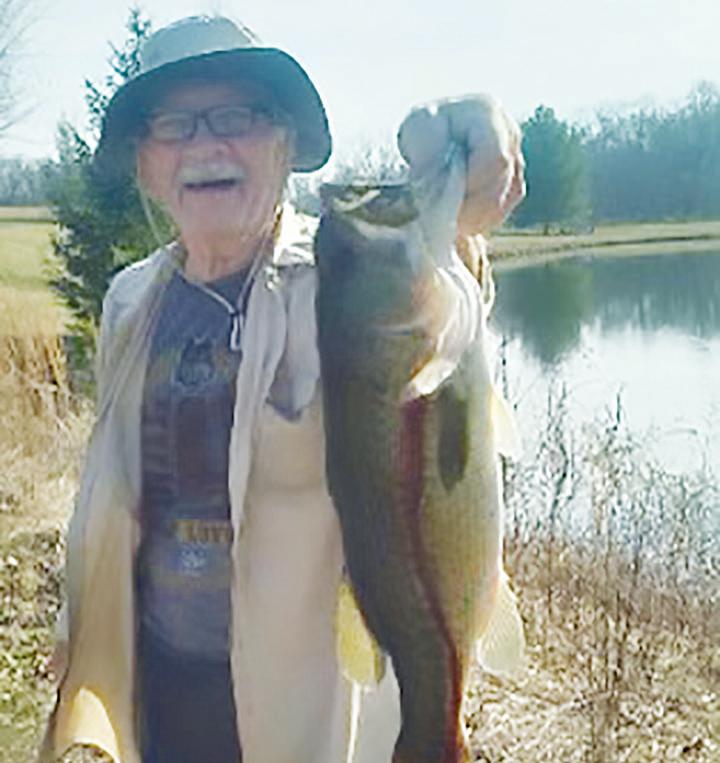
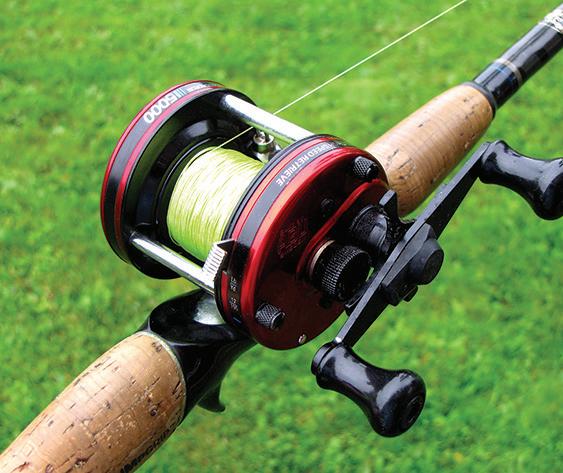

Among current offerings are the smooth workhorse Revo low profile reel, the speedy Revo Rocket, and the pro-level performing MGXtreme spinning reel or light-weight MGXtreme Low Profile.
Abu Garcia reels and rods can be seen at abugarcia.com. Pictured is the Abu Garcia Ambassadeur baitcasting reel.
Outdoors lovers who are serious about staying hydrated will appreciate the Hidrate series of high-tech bottles now available at Amazon.com.
They are nothing less than the world’s smartest water bottles, using an LED smart sensor picks that glows to remind you when it’s time to drink and that tracks your water use on Bluetooth.
The 21-ounce brushed stainless steel bottle, BPA-free, has a chug lid and keeps drinks cold for up to 24 hours without a sweat. The plastic lid is dishwasher safe.

Buyers pick the lid, color and size of their choice including custom glow colors and light patterns. The app Hidrate Spark tracks where the bottle goes so you won’t lose it. It also has a hydration equation feature that calculates your water goal using factors such as age, height and weight.
Versions of the Hidrate bottles start at $69.95 on Amazon. com.
The GSI Outdoors Infinity Backpacking Mug is a wonder for a low price. It isn’t high-tech, but then it doesn’t need to be. It does all the right things anyway.

It is lightweight at just 3.5 ounces, and it’s tough, too, and goes on serving outdoors people as long as they need it to. For big drinkers, it holds up to 17 pounces of liquid, and it can be a bowl if you need it to, while the handle has a sturdy grip.
The inside is non-leaching, BPA-free polypropylene wrapped in insulated neoprene with a non-slip bottom. The lid seals, and a small tab lets you drink through it. This wonder of the outdoors is just $12.95 at Amazon. It comes in red or blue.
Missouri Department of Conservation
Landowner goals and conservation can be one in the same, as many improvements to the value of your property can also help improve wildlife and native habitat.
The Missouri Department of Conservation (MDC) is sponsoring a workshop for landowners and property managers wanting to learn more about how to benefit their land and make it better for wildlife, from 8:30 a.m. to 2:30 p.m., Friday, March 24 at Powder Valley Conservation Nature Center in Kirkwood.
The workshop is free, open to all Missouri landowners, and a lunch will be provided.
Presentations will be conducted in concurrent sessions throughout the day covering fish, forest, and wildlife management topics to help land-
owners achieve their land-use goals in ways that enhance Missouri’s natural resources.
Sessions will be led by natural resource experts from MDC, Quail Forever and the Natural Resources Conservation Service. Presentations will demonstrate how sound land management can improve hunting, fishing and wildlife viewing opportunities, attract valuable pollinators and enhance timber value. The workshop will provide helpful publications and educational materials for participants to take home free of charge.
• Pond management.
• Forest management.
• Managing habitat for small game.
• Property rights and the Wildlife Code.
• Turkey biology and management.
• Native forbs and plantings for pollinators.
• Invasive plant control

• Tree insect and disease issues.
• Creating and maintaining healthy soil
Advance online registration for the workshop is required at https://short.mdc.mo.gov /4Y3. The deadline to register is March 19.
Powder Valley Conservation Nature Center is located at 11715 Cragwold Road, near the intersection of I-270 and I-44.
Subjects to be covered during the workshop will include:

4 3
1 2 4
The workshop is part of MDC’s commitment to work with landowners and property managers to both meet their needs and enhance our state’s fish, forest and wildlife. To discover more resources for landowners online, go to https:// short.mdc.mo.gov/4ZR.
Don’t wait! Now is the time to head to one of MDC’s two staffed shooting ranges and outdoor education centers in the St. Louis area to sharpen your skills and pattern your shotguns for spring turkey season.

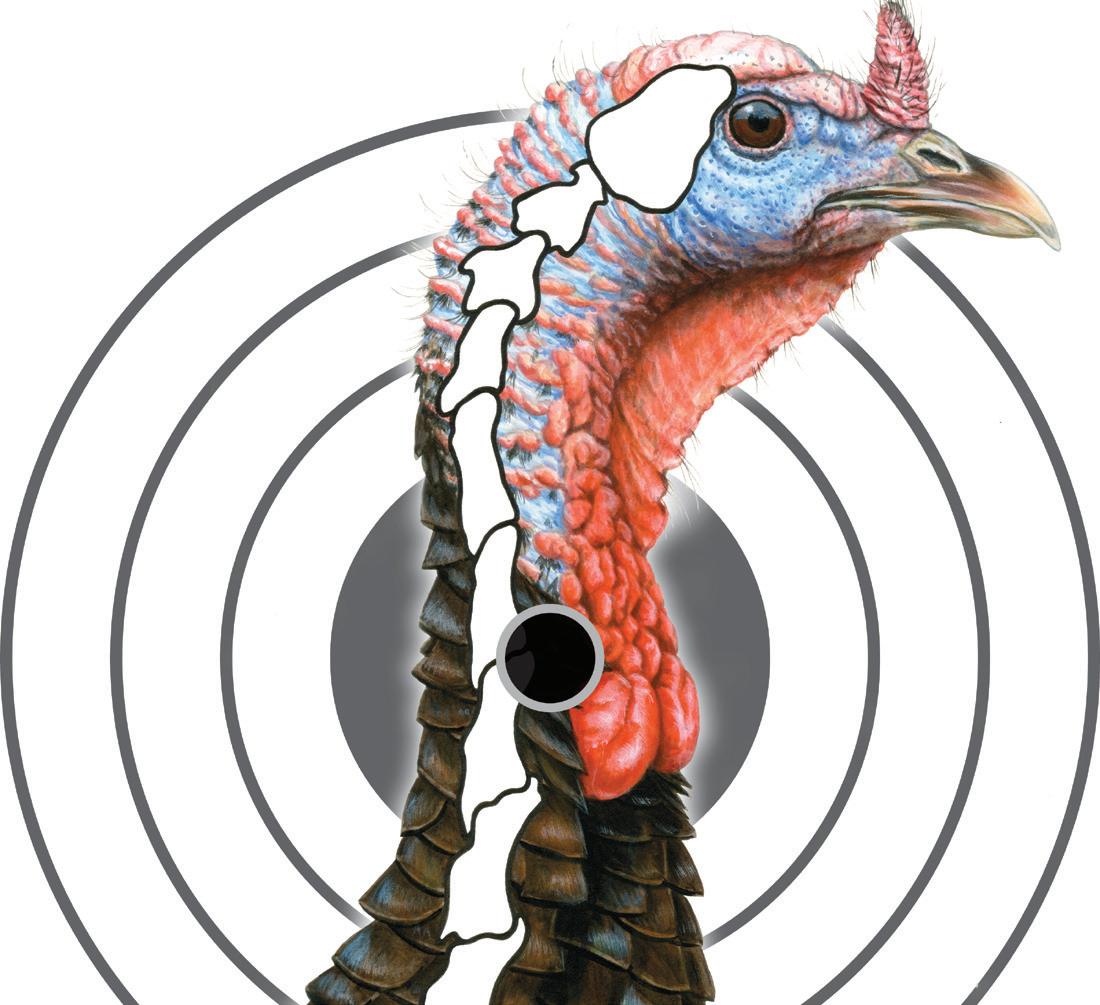
August A. Busch — Defiance
3550 Route D, Defiance, 63341 mdc.mo.gov/buschrange
Jay Henges — Eureka
1100 Antire Road, Eureka, 63025 mdc.mo.gov/hengesrange
Andy Dalton Lake City

Jay Henges
Parma Woods
August A. Busch
Not a turkey hunter, but want to learn?

Our staff of specialists can help you master firearms and archery, wildlife identification, and many other outdoor skills. Visit mdc. mo.gov/shootingranges to learn more.

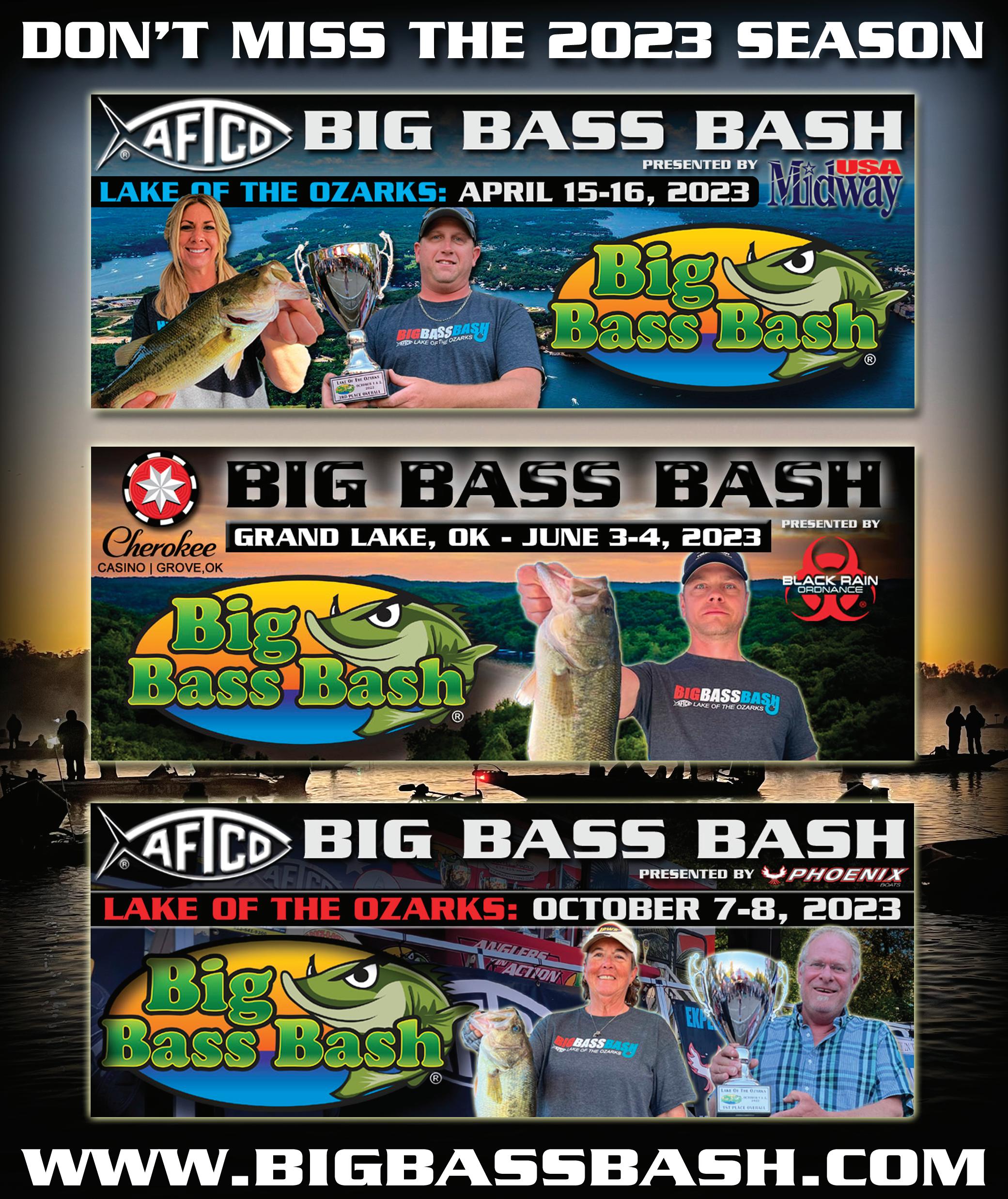
When warm, sunny weather appears magically in mid-winter, my mind always takes off on a tangent about all the places I plan to fish in the coming months. From Minnesota to Mexico, I can name 100 or more waters I could happily spend a day on trying to put a few fish in the boat.
In the end, I won’t make it to half the destinations I dream of, but one lake that always
draws me back and where I make it a point to visit as frequently as possible is Patoka Lake in southern Indiana.
At 8,800 surface acres, Patoka Lake is the second-largest reservoir in Indiana. The lake is an amazing fishery, with deep coves and standing timber scattered throughout. But in my book, it’s the roughly 17,000 acres of public land surrounding the lake, and the public lands of nearby Hoosier National Forest and numerous state forests, that
make Patoka a very special destination for sportsmen and outdoor enthusiasts.
Patoka isn’t just a lake, it’s a nature experience. River otters, osprey and bald eagles call this place home. It’s wild and scenic. You can hunt, fish, hike, bird-watch, paddle and more. Plus, the Department of Natural Resources campground offers 500 sites with modern amenities and many activities.
When it comes to cast-andblast opportunities in Indiana,
Patoka has to be right at the top of the list. All at once, crappie fishing catches fire, turkey season opens and morel mushrooms start popping up in clusters. You can experience all three of these rights of spring in the same day at Patoka.
Crappie fishing is one of my favorite pastimes. These hard-fighting panfish are fun to catch and great to eat. Using minnows under slip-bobbers
The crappie fishing is excellent at Patoka Lake. is the most common tactic for catching crappies, but jigs often work just as well.
This time of year, you’ll catch fish shallow in less than 7-feet of water over solid bottoms. The crappie bite should remain strong for the next couple of months.

Turkey hunting is an obsession of mine. There’s nothing I love more than working a gobbler into range with a slate call. With so much public land around Patoka, you are sure to find a place to escape the crowd where an old gobbler has been left undisturbed.
For those of you who have not hunted these large expanses of public lands before, it’s a great feeling to hear a gobble off in the distance, knowing there are no fences between you and that bird.
While you’re out stomping the hills chasing turkeys or after you limit out on the water, there are bushel basket loads of morel mushrooms to be found in the sprawling woods. Good areas to look for morels include south facing slopes, around fallen logs, and around the bases of elm trees, especially dead ones. South facing slopes are prime spots
early in the season because they warm up first.
There are multiple options for lodging. You can camp or rent a cabin on land, or you can sleep on the water. Both floating cabins and houseboats are for rent on the lake. If you choose to rent a floating cabin, you can pull your boat right up to our door.
If you go with a houseboat, you can move your camp to the most remote regions of the lake, where you can step onto public ground and start hunting or sit in a lawn chair and cast for crappies off the back.
Once you’ve had your fill of the great outdoors, the historic and exciting towns of French Lick and West Baden are just 15 minutes north. If you’ve never been inside the West Baden Springs Hotel, you owe it to yourself to stop. The elegance and architecture are like nothing else in Indiana. Jasper is about the same distance west. For a special dinner, visit Schnitzelbank Restaurant. This authentic German dining destination is a must.
For more Driftwood Outdoors, check out the podcast at www.driftwoodoutdoors. com or anywhere podcasts are streamed.


The morning’s freshly brewed cup of Joe tasted especially good. I’m not sure if it was because the taste buds had a good night’s rest from the previous day’s bombardment of chili, cheese, crackers, tea, cookies, popcorn, scrambled eggs, French fries and ice cream (or any other organic material I’ve forgotten) and actually performed their function unbiased.
Perhaps it was that the first inundation of scalding caffeine washing over the sleepy oral tissue jolted the membrane, so it responded immediately by innate reflex, reporting exactly what had been detected.
Now, I’ve heard bloated professions from wine enthusiasts describing various vintages with flowing adjectives such as “grassy,” “floral,” “earthy” or “peppery.”
Some even expound on the distinctive notes of tobacco or leather. (I’m not sure here if they had TOO much wine and were sipping from the water bucket in a tobacco barn where a bridle was soaking).
Such descriptions seem farfetched. Heck, I could put on a tux and sip away and confidently that state this wine has hints of alcohol and fermentation and be just as accurate.
But it was wonderful to sense flavors I hadn’t noticed before. Say a burnt coffee bean taste (I do prefer the French Roast intensity) with a hint of herbal-ness that I hadn’t noticed before; you know, beans plucked fresh, right off the coffee tree, or plant, or bush, whatever, and seared to perfection. It blended very well and suffice it to say, “Et tast’d reel goud!”
However, euphoria lasted only a minute or two. I guess the “can’t-get-enough-of-this” copious consumption, and the fact that by such action I likely cauterized 90 percent of those taste buds, had jaded the palate and I was left enjoying a mere robust mug of 40 weight.
I am thrilled that all of my senses and taste have remained immune to aging-inspired deterioration these past 66 years. Flavorful foods are a delight, a mood elevator, a theme for wonderful conversation, and a pure joy.
I mean there’s not much reward from the other four senses when you try to listen to a streak, or see and touch a roasted turkey’s aroma, or even smell the glisten of a gourmet burger. Nope, just doesn’t work.
But another grand benefit to swigging such a marvelous neuron-stimulating elixir is its
I rise early in the morn and in yesterday’s clothes I adorn, ignoring the green scent lines of funk.
And hobble to the table, the best I am able, and plant down my ever widening trunk.
With coffee in hand, the bird feeder I scan, hoping to observe something new.
But before the birds group, up comes the squirrel troupe, more numerous than drops of dew.
These arboreal rodents make quite a site, Cloaked in hair that’s rusty-orange and bright, with just enough grey to grizzle. You see for squirrel fur, this the norm keeps them cool, yet warm,
In a shower, downpour or drizzle.
They sport razor-sharp toenails, black eyes and broad tails and a shiny mouse-like nose.
Complete with buck teeth, and of course four feet, fitted on all bucks and does.
I study the tree rats and add up the facts but still ask what do squirrels really do?
They climb. They leap. They scamper. They creep. But what else?
I had no real clue.
But after scads of coffee and a careful observation session, I witnessed the answer to this burning question, And now fully understand what all squirrels really do.
Because right then on cue, one ascended to its seed-laden pew,
And displayed their sole purpose is to eat, chew and poo!
assistance in solving some of the natural world’s great mysteries. Oh, it’s true. And this morning it was squirrels.
In the past few months I’ve had numerous squirrel calls from folks who don’t particularly favor unwanted rodent-type tenants. Holes gnawed into eaves, and soffits the size of grapefruits, attic insulation wadded into nest mounds large enough to house a large beagle,


and lengths of electrical wire coatings chewed with precision (similar to me eating corn on the cob) does little to cultivate human-wildlife relations.
I set traps, catch the culprits and try to repair the damages as best I can.
But still I ponder, what do squirrels really do? Then the coffee’s inspirational magic kicked in and the answer was revealed to me in a poem.
 By CARL GREEN Outdoor Guide editor
By CARL GREEN Outdoor Guide editor

Fish biologist and Missouri Stream Team leader Mark Van Patten this year will become the latest St. Louisan to be inducted into Hayward, Wisconsin’s prestigious Freshwater Fishing Hall of Fame.
The Hall inducts three people each year for their service to the sport and the environment – and for their fishing. With the Hall and its adjacent museum still closed for Hayward’s long winter, the date of the event had not yet been announced.
“This recognition is bestowed on those who have spent a great share of their lives promoting, educating and sharing their passion for freshwater fishing in a manner that positively impacts the sport for the millions of anglers around the world,” said Emmett Brown, the Hall’s executive director. “There are many who love to

fish but few who can be considered Fresh Water Fishing Hall of Famers.”
Van Patten is a retired Fisheries Management Biologist for the Missouri Department of Conservation. On his own, he became a Stream Team organizer for the Missouri Southeast and St. Louis regions starting in 1989, leading to numerous cleanup projects. In that role, he coordinated the activities of volunteers, helping them to take active roles in protecting and preserving the rivers and streams they loved.
In his personal time, he became a published author, and for 13 years he hosted a national weekly PBS television show on fly fishing called, “The Tying Bench.” Among his books are “Moonshine and Watermelons
and Other Ozark Tales.”
THE BIG CLEANUP
The museum’s announcement described Van Patten’s lifelong love of fishing and the outdoors.
“Mark spent a lot of afternoons in and next to his favorite river, Roubidoux Creek in Pulaski County,” it said. “As he became disturbed by the amount of dumping and debris in this once pristine resource, Mark decided to do something about it. With his friends, the Roubidoux Fly Fishers, he organized a Roubidoux River Cleanup in 1988, removing 14.7 tons of debris in just a couple of days.
“When he heard the Conservation Federation of Missouri was beginning a new statewide river cleanup program for volunteers, Mark signed up as Missouri Stream Team Number One. Since those inspiring beginnings, the Missouri Stream
Team program has exploded in numbers and in the diversity of work that is being done for Missouri waters,” the museum reported.



John Winkelman, associate editor of Outdoor Guide Magazine and a longtime friend of Van Patten, said the honor is richly deserved and highly appropriate.
“It is terrific news to hear that Mark Van Patten is being inducted into the National Freshwater Fishing Hall of Fame,” Winkelman said. “He has achieved iconic status in Missouri, and now the rest of the country and world will have the opportunity to know about his craft and commitment.
“Some people blaze trails, and others fly down the superhighways that pioneers before them paved. Mark Van Patten is one of the rare individuals with credits in both categories,”
The Freshwater Fishing Hall of Fame in Wisconsin. Winkelman added. “While he will acknowledge those who led the way for him, we know for certain that future generations will owe a debt of gratitude to Mark for years to come.”


Two other legendary figures are being inducted this year. Karen Eppinger, of Michigan, is


the grandchild of Lou Eppinger, founder of Eppinger Manufacturing, in Dearborn, Mich., and she has been leading the venerable company since 1987.
Lou Eppinger created a successful spoon lure at first called the Osprey in 1912. They later renamed it Dardevle, a name still used for the company’s lures.
Meanwhile, Stan Moberly, a research biologist in Alaska, is being honored for a lifetime of service.
“Stan pursued his passion for abundant fisheries and healthy habitat,” Brown said. “He focused on identifying and fixing the harmful effects of timber clear-cutting practices in the Tongass National Forest on some of the most productive salmon streams in the nation, on the downturn in herring populations associated with pulp mill discharges into coastal waters, and on promoting the need to conserve adequate instream flows in rivers and water levels in lakes and reservoirs, which were being damaged by withdrawals from mining, pulp mills and other industries.”

The Hall of Fame describes itself as “the international headquarters for education, recognition and promoting of freshwater sport fishing.”
It was featured in the Outdoor Guide and the Labor Tribune a few years ago and remains a fascinating museum and library of fishing and a salute to the pioneers of fresh water fishing, including many who are still out there making
Located in northwestern Wisconsin, its season runs from mid-April through the end of October, seven days a week. It keeps the world record book for fresh-water fishing and is the site of the world’s largest walk-through muskie sculpture. See its informative website at freshwater-fishing.org.

It takes only five ingredients to make mayonnaise, even though one popular products lists 13 and another has 18 including “natural flavors.” To avoid some of those ingredients – the cheap and inflammatory oils – I began making my own mayonnaise.
I tried it using a blender. Some people do that successfully, but I wasn’t one of them, and I needed a foolproof solution.
So I came across a method gaining popularity – probably because it works every time. What’s really nice is that it takes, at most, five minutes from beginning to end. Five minutes, five ingredients.
Some of you have stick blenders in your kitchen. If you ever watched Emeril Lagasse, you know it as a “boat motor,” and others call it an immersion blender. No matter what you call it or which brand you buy, they all come with a beaker or jar made to fit their product exactly.

The stick blender alone isn’t the answer. It must be used in combination with the container that came with it. Following instructions matters too!
Additionally, ingredients matter, so let’s talk about them. Aside from providing good flavor, the vinegar helps the emulsion to form, and it prevents the splitting of the oil from the egg. It does not have to be vinegar. For example, it can be lemon juice. They both are acidic. The process won’t be affected, just the taste – if your tastebuds are that discerning.
The oil that you choose to use, on the other hand, can offend even the least discerning

palate. Olive oil, especially extra virgin olive oil, has an overwhelming taste for many people. A lighter oil such as sunflower or avocado adds less flavor, and canola and corn oil are in that category as well, but are considered inflammatory.
Depending on your source of eggs, you may find the mayonnaise very yellow. It should be! Without water and stabilizers, that egg should add some color.
The official word is that it will last up to a week. They probably have to put that for “CYA” purposes. I’ve gone a little longer, but I do write the date on my jar. Black sharpie on glass works quite well and washes off easily.
INGREDIENTS:
• 1 whole egg
• 2 1/2 tsp apple cider vinegar
• 1/4 tsp Dijon mustard
• 1/4 tsp sea salt
• 1 cup light-flavored oil
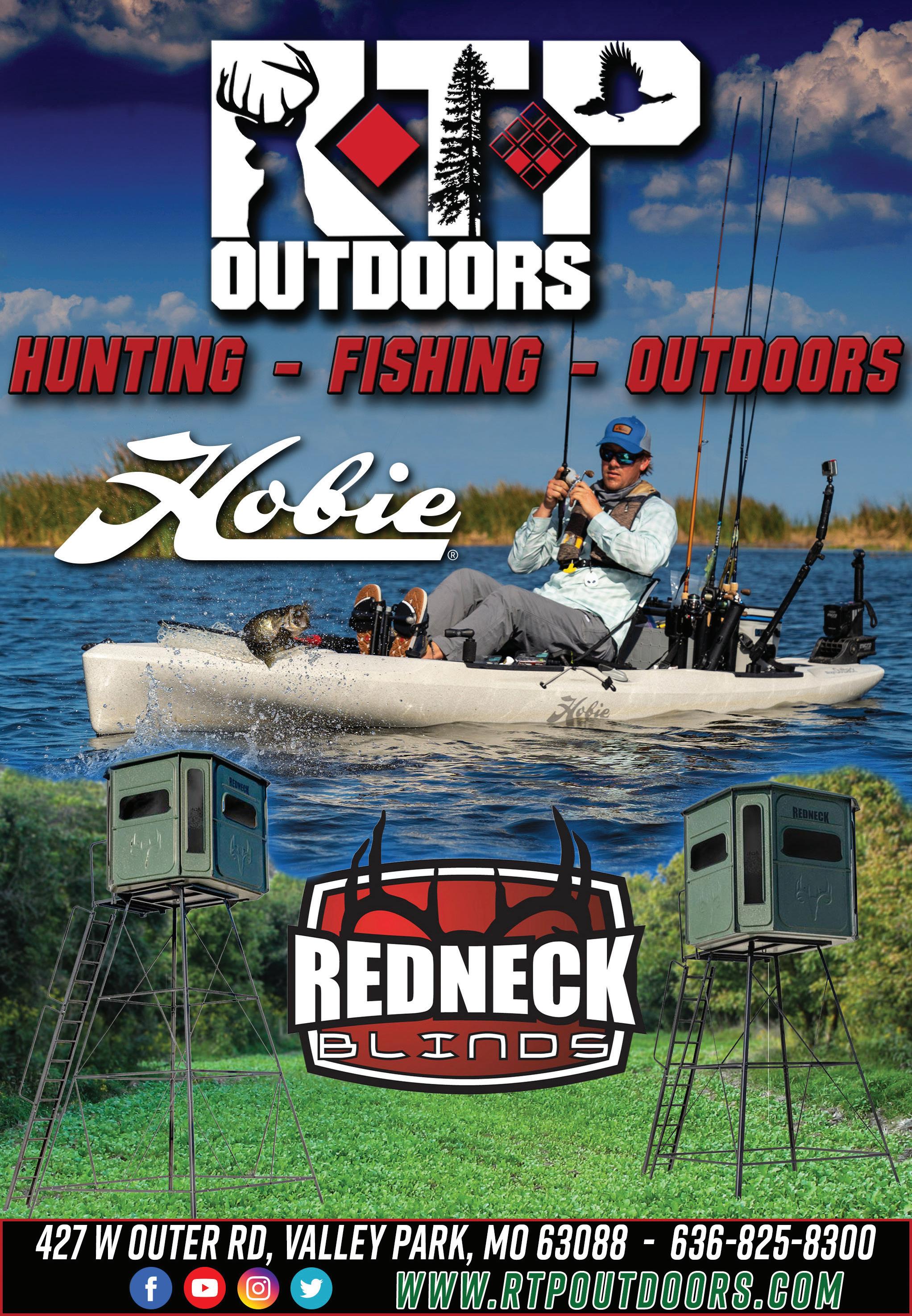
Add all the ingredients (with the oil last) into the jar that came with your stick blender. Give the ingredients 1-2 minutes to settle, leaving the oil on top. Place your stick blender in the jar and press it firmly to the bottom. Turn it on and keep it pressed against the bottom of the jar for 10-15 seconds. Once the mayonnaise starts to emulsify and thicken, slowly move the stick blender up and down to fully combine the ingredients.
Once it’s all blended, remove the stick blender. Give it a few stirs with a rubber spatula and store it in the refrigerator. Last time, I made some honey mustard dressing first. Bon appétit!
Photos and Text
My younger years included fishing in ponds, small lakes and small rivers. Mom and Grandma were my guides, finding spots on the bank that were safe and would have access to a fallen tree, stump or brush. Early gear was a cane pole, heavy braided line, cork, crimp-on sinker and large, gold minnow hook.
The goal was crappie, but we kept almost anything we caught.
Later we upgraded to fiberglass extendable zip poles. We also got a couple of Zebco 202 reels on cheap fiberglass casting poles. The casting poles were good worm-fishing outfits when targeting catfish and bluegill.
My early teens allowed me to graduate to more ponds – at least any within bicycle-riding distance, and that was a long way for me back then.
Why tell you about my younger years? Well, my memories of fishing small waters are vivid and cherished. I always enjoyed fishing out-of-the-way places and still do today.
The Outdoor Guide region is full of places to fish. Big boats
and big waters have their own type of fun, but the smaller places are special in other ways. Add a youngster to your trip, and you’ll also enjoy rock-skipping, playing with turtles and watching wildlife.
Small waters offer some real advantages:

• SLOW DOWN – In today’s face-paced world, they allow you to slow down. You won’t be flying up and down a lake looking for fish.Also, you won’t have to deal with water skiers and jet boats.
• CONFINED FISH – Small waters mean fish will be confined so they will be easier to find. For crappie chasers, find cover at the right depth and you’ll have action. From the bank, look for a lay-down with decent water depth. In a boat, the same strategy applies but you will have access to more spots.
• MORE TIME – Small waters remove the urge to move quickly. You won’t be running up and down a big lake, so you slow down and thoroughly fish the water you have available. More time is spent fishing.
• LOWER COSTS – Small

Outdoorsman Tim Lesmeister enjoys fishing in a small cove of a big lake.
waters are more economical to fish. You don’t have to have a big gas-burning boat and the expenses that go with it. Small, economical boats, canoes and kayaks work great.
• LESS WIND – Wind usually isn’t a big issue on small waters. You can get on the protected side and fish from the bank or from a boat.
• EASY HANDLING – Having a small boat may mean having something that can be slid into the water, or a boat with a trolling motor and small outboard, launched from a ramp.
Today 9:15 AM
Crappie fishing starts with structure and cover. Creeks, ditches, ledges, points and other contour features provide crappie with the depths and reference points they need. Covers can include brush piles, stake beds and trees. Cover provides hangouts where crappie have protection, a place to ambush prey and a place for shade. The combination of good structure and cover creates a potentially great fishing spot.
Catching fish means follow-
ing a few rules. Being quiet is critical and often is the most abused rule. It’s easier to catch fish when they don’t know you are there. Boat control is important, too. Anchoring is a good way to hold a position and fish nearby cover. A trolling motor is a bonus but must be used quietly.
Jigging is a good crappie tactic when working areas with brush, stumps or trees. Jigs are best to get in and out of cover with the fewest hang-ups. A 1/16-ounce jig with a small plastic body, like a baby shad, is a good overall choice for getting bites. The best colors vary with different waters, but having black/chartreuse, white/ chartreuse, and monkey milk will cover most situations.
Casting is fun and increases fishing distance for bank fishermen. For boat fishermen, it can keep baits further from the boat to avoid spooking fish. A slip-float and minnow are good to allow a bait to stay in an area for a long time and to provide a bite indicator.
David Baynard, owner of Driftmaster (call 803-473-
4927), is comfortable fishing from his kayak in sloughs, small rivers and smaller areas of big lakes. He says a kayak is a great way to fish and the perfect solution for a fisherman on a budget who wants to get on the water.
“You don’t need a launch ramp like you do with a big boat,” he said. “You can fish small waters. A kayak is easy to maneuver, quiet and very stealthy, so fewer fish are spooked. You can get into waters where a big boat can’t go, and it can be used to chase and catch any species.
“So why not turn a kayak into a crappie rig?” he asked. “I used a simple trolling rack that incorporates big-boat ideas into my kayak. Plastic holders are OK for a while but they only last a couple of years. Our holders are heavier but they won’t break.
Whether fishing from the bank, a small jonboat, canoe or kayak, there are numerous small ponds, lakes and backwaters where a fisherman can have fun and catch crappie. Get back to nature, relax and have a great time.

The quiet majesty of the Ozarks beckons your family to explore the great outdoors in Pulaski County, MO. Bask in the warm sunshine as you drift down the calm currents of the Big Piney and Gasconade rivers. Cast a line in the cool, pristine waters as your kids land their first real fish story. Explore the remarkable shops and diners that line 33 miles of Historic Route 66. Absorb the history of heroes, pioneers, and engineers through the museums and historical sites. Then, sleep under the stars or rest comfortably in a cozy vacation home and plan tomorrow’s adventure.
Plan your family’s next big trip today at PulaskiCountyUSA.com.
“Be on later. Wi-Fi is down.”



Turkey populations in Missouri are declining. State statistics tell the story. However, turkey hunters can take encouragement knowing the Missouri Department of Conservation (MDC) has taken these bird woe issues by the tail.
Let’s talk turkey. First the bad news: Missouri’s wild turkey population has been declining for decades. Each year, the MDC reports on the poult-to-hen ratio (PHR).

The PHR numbers tell us the average number of young turkeys, called poults, that each hen raises throughout the state.
The PHR was highest in the early 1970s. Production began to decline in the late 1980s and bottomed out in 2016 and 2017 at less than
one PHR.
The most recent PHR studies show a 9 percent increase over the previous five-year average. However, over a 20year average the PHR decline is 21percent.
Turkey hunters don’t need PHR statistics to know that it’s gotten harder to bag these birds in many areas. They do want to know that state authorities are aware of the problem and are seeking solutions. So, what’s the deal?
Nick Oakley is the Missouri Department of Conservation’s Wild Turkey and Ruffed Grouse Biologist. He oversees extensive research into what’s going on with Missouri’s wild turkey population and he has some answers.
Oakley says there are many reasons for the decline in the number of poults each hen is producing yearly. The causes are: habitat loss/degradation (specifically nesting and brood rearing habitat); changes in spring weather patterns; an increase in predation; and, a decrease in insect abundance.
“Predation has repeatedly been shown to be the primary cause of nest failures and poult mortality,” said Oakley. “That said, turkeys and predators evolved together. Turkey populations can withstand pressures from increased predators, if they have appro-
priate habitat and resources.
“Predator controls have been, and are being, tried in other states, but the likelihood of success is very low,” explained Oakley. “A better option is to improve nesting and brood rearing habitat. And we need to provide hens with
the tools to evade predators.”
For forested landscapes, the “easiest” way to create brood rearing habitat is to thin overstocked timber stands. The effort enables light to reach the forest floor promoting vegetation beneficial to turkeys.
Keeping the forest floor more open to allow hens to see predators from farther away can improve the turkey’s survival chances. That’s true for other forest creatures as well.
In addition, regular prescribed burns will stimulate the growth of desirable species while slowing or stopping the spread of less desirable species. It also helps to keep the forest floor more open to allow hens to see predators from a distance.
ers complete habitat-related projects.
“Each county has a private land conservationist who can help provide technical advice,” explained Oakley.
“Also, these conservationists can help interested parties with the paperwork necessary to enroll in a cost-share program.”
Oakley does not recommend reducing the number of seasonal turkey hunting permits, limiting hen harvest, or shortening seasons to help slow the decline in turkeys.
“The current level of harvest is not driving the population decline,” said Oakley. “By limiting season timing, length, bag limits, or removing the fall season all together, we still would do little to improve the overall outlook for the turkey population – and at the cost of limiting hunter opportunities.

“Limiting hunter opportunities is not an answer,” said Oakley. “Harvest from spring season mainly comprises males. Spring season was shifted later in the year to minimize hunting pressure on breeding activities. Really, only about 5 percent of spring turkey hunters fill their second tag. So, spring season changes would likely have little positive effect on turkey population.”
Not everyone can manage their forested property with burns or other measures to improve habitat. Nevertheless, doing something is better than doing nothing, and MDC provides plenty of ideas for good turkey habitat management on its website.
MDC is taking action to manage the state’s public lands for turkey brood rearing and nesting habitat. In addition, there is a new program called the Turkey Habitat Initiative (THI). It aims to identify attributes of highly productive turkey habitat, and then use them through implementation.
“We plan to engage partners and landowners across the state, too, so as to increase the brood rearing and nesting habitat,” said Oakley. “There are cost-share programs to help interested landown -
While turkey numbers have declined, the turkey population is still very strong in Missouri, according to Oakley. He said keeping a diligent eye on the population, and committing to improve nesting and brood habitat, can ensure the long-term viability of the state’s turkey population.
“I don’t think the turkey population will return to the peak that we saw in the mid2000s,” said Oakley. “However, the more quality habitat we create, the more likely the population will have the resources necessary to grow.”
Missouri’s wild turkey hunting is a seasonal joy for many. Generations of turkey hunters have enjoyed the season’s camaraderie, telling of past turkey hunting adventures and passing down skills learned over a lifetime. These traditions are key to preserving a hunting heritage and encouraging conservation efforts.
Article Commisioned by Miracle-Ear.

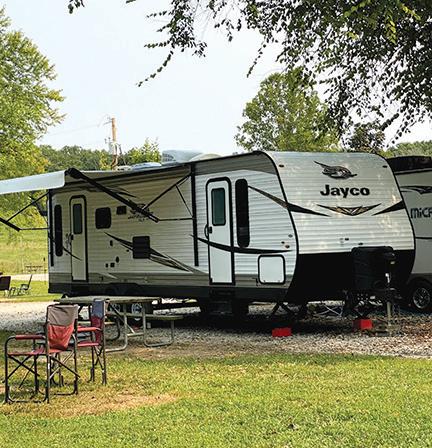 By BRANDON BUTLER
By BRANDON BUTLER

With the sun shining bright over the weekend and temperatures pleasant in the 40s, my daughter and I hit the woods for some shed hunting and scouting for next deer season. We learned a lot about a particular piece of ground where we plan to hunt. Now is the time to get out there and scout your ground. Look for rubs and scrapes from last year. Chances are these areas are used year after year. Start planning for this season based on what you find from last season. The following four tips that will hopefully help you scout more effectively.
Maps and aerial photos cut your work in half. Look for natural funnels that force deer to pass by certain areas. Any section of woods with an hourglass shape is a good place to begin scouting.
Deer, especially mature bucks, generally hang tight to cover while traveling during daylight. Exploring funnels this time of year will help you decide where to hang your stands for next season. Certain areas that often produce funnels are water edges and roadways. Look for areas where two corners meet as well. Google Earth is a great way to obtain free photos of any property you plan to hunt.


River bottoms and along creeks are two of my favorite places to deer hunt. From one of my all-time top stands, I regularly watch deer cross at the same spot. Deer prefer to cross where they can keep their feet in contact with the bottom.
Try to find shallow crossings and hunt there. The edge of one creek I hunt separates a dense woods and an agricultural field. Deer cross the creek from the woods and hang up around my stand as they scope out the field they’re planning on entering to feed.
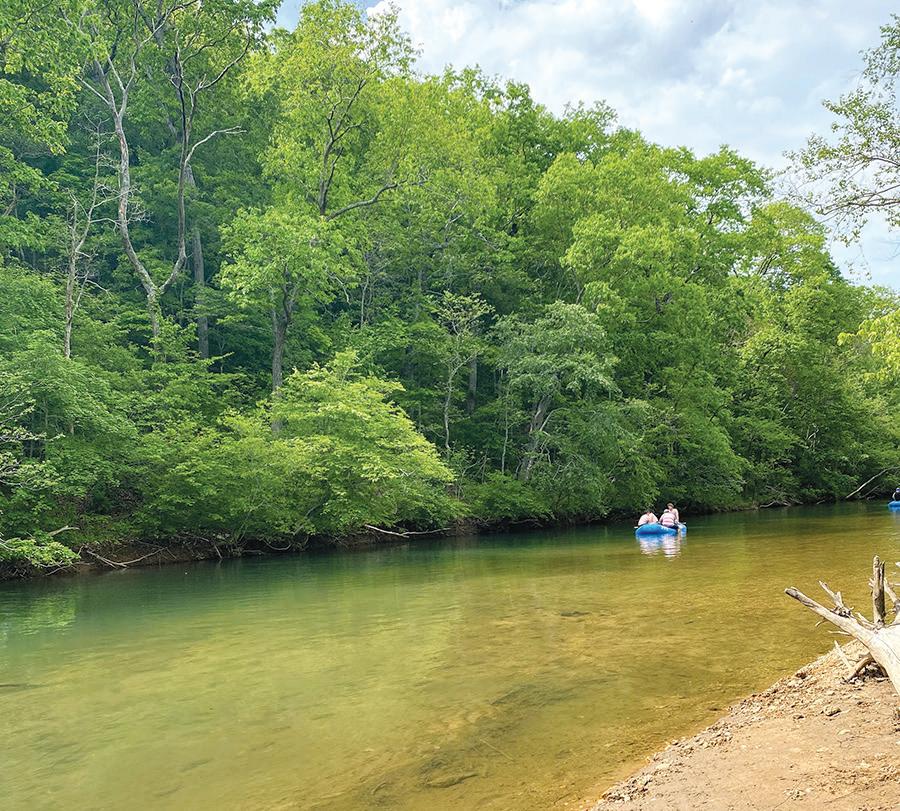
With their attention focusing on the field in front
of them, I am at a major advantage. With the ground bare this time of year, you can find these heavily used crossings easily. There is no reason to wait to clear brush and limbs from a projected stand or blind location. If you can see that brush or limbs need to be cleared while there are no leaves, they will definitely need to be cleared once the foliage grows back.
By clearing shooting lanes now, you may have to prune the area only slightly in the summer or fall. The less you have to disturb your hunting area close to the beginning of the season the better.
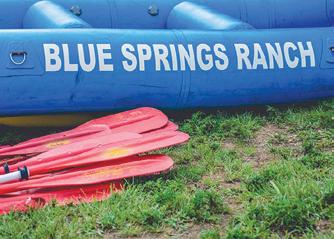




This may be the most important tip of all. If you are hunting a piece of land that hosts hunters other than yourself, you need to know where these people are spending their time.

Many hunters will either leave their stands up all year or come back for them in the spring, but even if the stands are down, you can often find another’s treestand location by locating trees with sawed-off branches or cleared shooting lanes.
Try to figure out how these hunters are entering and exiting these stands. Knowing where

others will be is important for safety, but it also keeps everyone out of each other’s way – and happy.
A smart hunter will use these other hunters to his or her advantage. Figure out where you can locate yourself to allow these hunters to push deer past you. Look for places to hunt downwind from their locations and know the escape routes deer will take away from those stands.
These tips should help you in your efforts to prepare for the next deer season. But remember, the most important tip of all is, ‘Don’t rely on luck.’ Put in the time now to better your chances come fall.




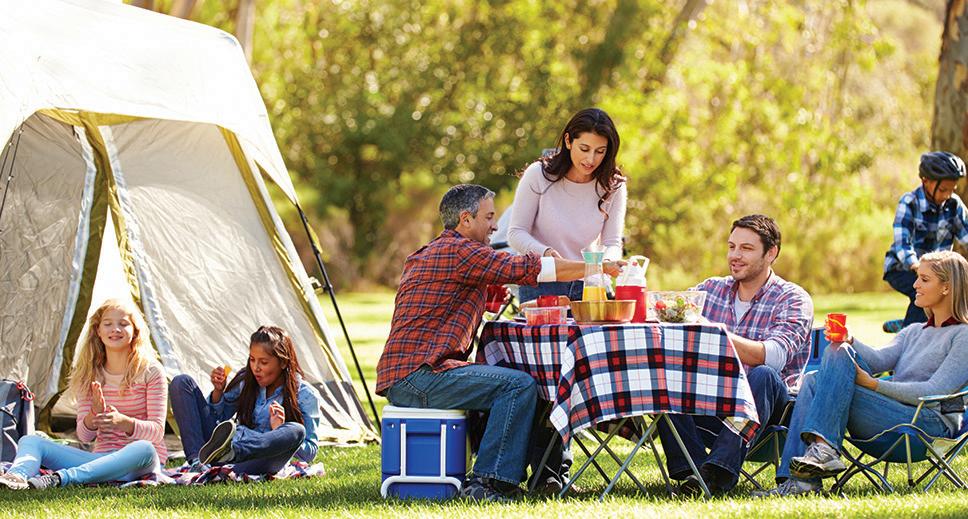





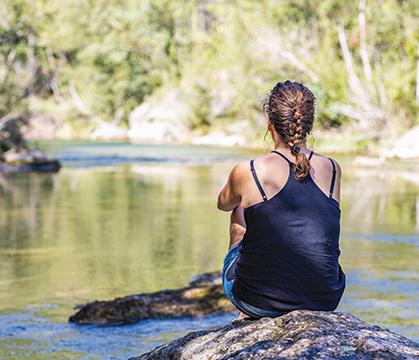
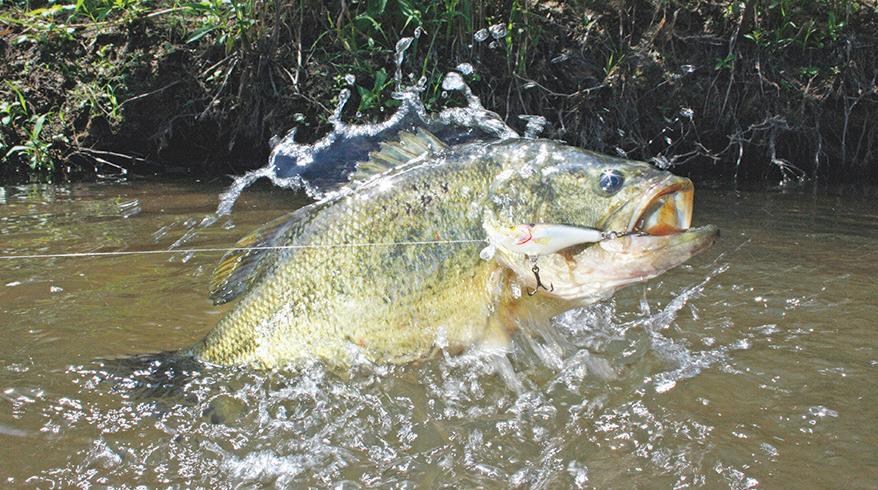





It was cold, but the wind was the worst part. A cold wind is both friend and foe when you are lying on your back in a frozen, snow-covered cornfield while goose hunting.


Even though the wind cut right through our clothes, it also forced the geese down quickly. Geese fighting the wind to land in your decoys is the stuff that goose hunters’ dreams are made of.
On this bitter January afternoon, I was hunting with good friend and professional waterfowler Kevin Brunstein, who lives in Jacksonville, MO, in Randolph County. We were hunting not far from there in Morgan County.
Kevin has mapped the feeding pattern of several thousand Canada geese. He pretty much knows where they will be and when, and he had his decoys set and was waiting on me when I arrived.
Our set-up was simple but effective. Kevin had us in a cornfield about two miles from a lake that roosted more than 1,000 geese. Each evening the geese would get up and fly out to feed in surrounding grain fields. The geese could and would fly out in any direction. Kevin’s recent scouting had us south of the lake.
At this point you may be thinking that this is just too easy, that this is a “no-fail” proposition. And you might be right. So I added a degree of challenge to this goose hunt. I
decided to shoot a single-shot shotgun on this hunt.
Last winter I acquired a 12-gauge, 3-inch magnum “Encore,” made by Thompson/ Center Arms. I got this versatile gun for turkey hunting. It performed flawlessly in April, so I decided to find out if it would perform equally as well in January.
The Encore has a system of interchanging barrels. The frame of my 12-gauge can become a high-powered rifle or even a muzzleloader by merely switching barrels. This gun is completely camouflaged and disappears in a cornfield. I was excited as the first bunch of geese got up.
Kevin and I both got down between rows of cut corn stalks and covered up with camo netting. Kevin began flagging the flock when they were about a mile out. This first group worked close, but not close enough to present a shot.
By now there were many groups of geese over the lake. This was going to get interesting fast.
It only took a few minutes for Kevin to get the attention of another, smaller group. The five big Canadas looked like C-40 transports as they set their wings many hundred yards downwind and rode the cold air currents toward us. They passed directly over Kevin’s head.
Not wanting to shoot over my partner, I let Kevin have this bunch, and he dropped a huge goose with his first shot. He then missed with two fol-
low-up shots.
“Good shot!” I yelled. “That proves that one shot is enough. I just need my chance.”
“Stay put!” Kevin responded. “There’s more comin’!”
About a dozen geese had already filed their flight plans and been cleared for landing in our decoys. Kevin and I both added some landing calls, but I really do not think we needed to do so. These big birds were locked in and gliding.
Just as they approached the

decoys, they straightened up and began back-pedaling in the wind to land. As I sat up to shoot, it was very much like a turkey shoot.
I sighted down the barrel of my Encore and saw my target, virtually motionless, at less than 30 yards. I put the fluorescent sights on the goose’s head and dropped it like a bad habit.
Having another shell ready, I quickly reloaded and was able to get off a second shot before
they were out of range. At no fault of the Encore, I missed. Kevin, however, finished off his limit out of the same flock, with a single shot.
A few more birds gave us a look, but as shooting hours ended, a single Canada goose was all I could manage. But I had proven that the Encore is a viable goose gun and learned to appreciate single-shot hunting even more.
Mike Roux can be contacted at www.mikeroux.com
It was one of those perfect spring days fishermen dream about.
As I turned onto a country lane leading to our family cottage in Wisconsin, my heart
melted. “I’m back,” my soul whispered. It had been a while since I visited our little A-frame at the edge of a lake, but not much had changed. Despite my dad’s grumbles that “the old place is going to pot,” I didn’t see it.
Maybe I didn’t want to see it. Our old boat was parked out front and the old patchwork cover that my dad had put together was still there. The coffee can of worms my dad always purchased at a bait shop on our way to the lake sat on the porch. And my mom and dad ran out to greet me, just like they always do.
“The bass have been biting,”

my dad announced before he even said hi. “The guy at the bait shop said a lot of good ones are being taken.
“But I’m sure there are a few left for us.”
My mom gave me a big hug and led me inside. Again, everything looked the same. The old black and white TV was
still on the shelf where it had always been. The kitchen, the bedrooms, the loft room – they hadn’t changed.

“A lot of memories here,” my mom said.
“Do you remember how we used to take you kids waterskiing? And the bonfires we had on the beach? And the times we would take the pontoon out and visit our friends on the other end of the lake?”
I answered, “Yeah, Mom, I remember.”
Mom smiled and added, “It’s so good to have you back.”
My dad interrupted and gruffly said, “Hate to break this up, but we need to get out on the lake.”
We trailered the boat down to the ramp, and I backed it into the water as my dad made constant reminders of what I was doing wrong. “Some things never change,” I thought to myself.
Once we were on the lake, my mood quickly changed. The well-maintained cottages that rimmed the lake still provided a peaceful backdrop to our trip. Friends shouted their greetings as we puttered out to our favorite spots. And the island where we caught so many fish in the past hadn’t changed a bit.
I looked at my dad and I could see the change in his attitude. He
Never
smiled as he reconnected with his favorite place in the world.
“Have you ever seen a place so beautiful?” he asked.
Not waiting for an answer, he pointed to a tree overlooking the water and said, “Does that look familiar? That’s the tree you threw my new Rapala into after I asked you not to use it. I didn’t even get a chance to use it, and you had already cast it into in a tree.”
We went a little further and we reached our favorite spot, the bubbler, a place where water from an adjoining lake flowed into ours.
“I wonder how many walleyes we’ve caught from this spot,” Dad said. “Every time a storm would come in, the walleyes would be in here. You always talked me into staying until it was almost too late to get back to the cottage before the rain hit.”
I looped a long cast with my Lindy rig and nightcrawler to the edge of the weeds in front of the bubbler and waited. When my line tightened, I set the hook. I fought the fish for a while… Then I woke up.
What a great dream. It took me a while to realize that it was just a vision from my past. My dad has been gone since 2001, my mom since 2008. But for one brief moment, we were reunited at the lake. And it felt so good.



 By BILL COOOPER
By BILL COOOPER
It’s the great turkey hunting debate. Which is the better hunting method – to run and gun, or to immediately set up, call and wait them out?
With more than 50 years of turkey hunting experience under my belt, I’ve watched many great turkey hunters from both sides of the fence – with many gobblers flopping on the ground.
I’ve also witnessed quite a few heated arguments about the topic. Turkey hunters are a hard-headed lot, especially when they are defending their position about how they hunt wild turkeys.
Successful turkey hunters carry egos as big as the shotguns they pack, and very few of them subscribe to the idea of admitting they are wrong about their tactics, especially when they have ample evidence to prove their point. Most have video footage, photos, or buddies who witnessed said hunts to support their theories.
I’m not proposing that this grand argument will ever be resolved, at least not as long as there are two turkey hunters
left in the woods. I do, however, hope to shed some light on the reasoning behind the thoughts of each camp on this most controversial of turkey hunting subjects.
Two of the most successful turkey hunters of all time, with whom I’ve been personally acquainted for decades and with whom I’ve hunted many times, are Ray Eye and Walter Parrott.
They both are from the Missouri Ozarks and know one another very well. However, Eye is a diehard supporter of the run and gun, call-until-theirears-bleed camp, while Parrott is a staunch supporter of calling softly and hunting birds as if they were always looking at your camp.

Who can argue with either of these two super-successful turkey callers and hunters?
I’ve been convinced for decades that most turkey hunters begin by running and gunning because turkeys will not come to their calling, and they don’t know what else to do. They hear a turkey gobble at a distance and begin calling. When the
tom doesn’t head their way in a few minutes, they chase after it. If they experience success with this method, running and gunning becomes their way of turkey hunting.

As long as I’ve known him, Ray Eye has been the ultimate call-hard, go-hard turkey hunter. I’ve hunted with him on several
occasions when he had a turkey gobbling but it did not gobble enough to suit him or did not come his way soon enough. I’ve heard him say, many times, “Let’s forget this gobbler and find one that wants to play.”
Ray Eye is an exceptional caller. He easily entices gobblers to do things that I could never get them to do. He is bold and aggressive. He calls long and loud and moves often if birds don’t cooperate quickly.
“Not every turkey in the woods gobbles on a given day,” Eye said. “I figure only about one in five gobbles the best of days. So I don’t like to spend a great deal of time on a bird that doesn’t react well to my calls. I know from my experience that most of the time if one bird doesn’t work, I can move on and find one that will.”
At the other end of the spectrum is world-class caller Walter Parrott. Parrott, too, is an exceptional caller and turkey hunter. However, he prefers to call quietly and rely on his patience to work gobblers.
“Gobblers are crafty birds,”
Parrott said. “I’ve seen many turkey hunters scare birds off before they even get started on a hunt by starting with loud calling. Turkeys hear much better than us.
“That’s why I always start calling very softly,” he added. “If a bird responds, I set up and begin working it. If a bird does not respond, then I begin calling louder, especially on windy days.”
Parrott also believes in sitting tight to wait gobblers out. “Patience is key to killing gobblers consistently,” he said. “Impatient hunters have kept more gobblers alive than you can imagine. Calling too loudly and moving too quickly are common mistakes. Hunters so often scare toms away that they don’t even realize are nearby.”
“You can’t see far in the thick woods, and a gobbler’s eyesight is far better than ours,” he said. “Moving too much and calling too loudly become your enemy. If you are having a tough time killing birds, you are more than likely committing these two big turkey hunting sins. My advice is to always to hunt wild turkeys as if they are looking right at you!”











